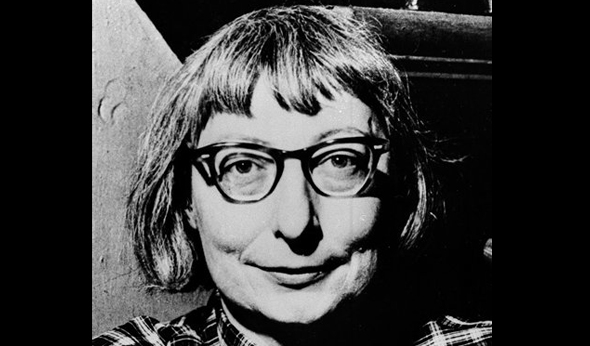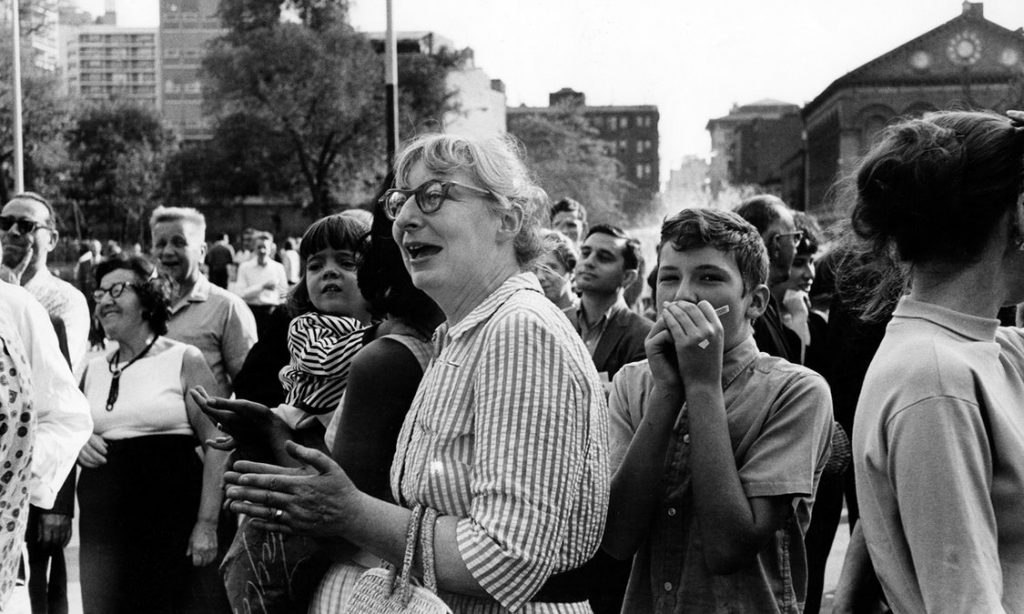Today, May 4, 2016 marks what would have been the 100th birthday of Jane Jacobs, one New York City’s most famous activists and a highly influential urban theorist. Her powerful critiques against the reigning theories of urban planning of the day dramatically changed the field and left a lasting mark on New York City, a place she called home and whose diverse and vibrant neighborhoods she loved and championed.
Happy birthday, Jane! You stirred the pot, ruffled plenty of feathers, got in the way of many big things, but above all else you stood up for what you believed in. You are loved by many (though haters gonna hate) and you are remembered. Thank you for what you’ve taught us and all you’ve done for the crazy, chaotic city we all love so much.
“…respect – in the deepest sense – strips of chaos that have a weird wisdom of their own not yet encompassed in our concept of urban order.”
For those newbies to the city, who are just coming to appreciate and understand its craziness, its chaos and complexity, Jane Jacobs is an important figure to get to know. If you’re not familiar with her life and legacy, there’s no shame in that. Here’s a very distilled primer on the highlights of her life.
- Jacobs was a prominent architecture critic, reporter and grassroots advocate, but she never graduated college. She completed two years at Columbia University before dropping out because after “garnering a certain number of credits I became the property of Barnard College at Columbia, and once I was the property of Barnard I had to take…what Barnard wanted me to take, not what I wanted to learn.”
- She loved biking
- Jacobs always sported a bob

Jane’s bob: hipster chic or 1950s frumpy? Your call.
- She opposed high-rise housing projects, the bulldozing of slums and top-down economic and development policies. Instead she advocated for the diversity, density and dynamism of cities.
- In the 1950s and 60s, she and her husband, Robert, and their two sons lived at 555 Hudson Street in the West Village. In 2009, the house sold for $3.5M.
- Her first major pieces of criticism were written for Architectural Forum in the 1950s. She tackled issues of urban blight, especially in places like East Harlem and Philadelphia, and argued that modern practices of urban planning were threatening local communities and the active street life that defined them.
- Her arch-nemesis was Robert Moses, the powerful city planner behind major public works including the BQE, Lincoln Center, the Brooklyn Battery Tunnel, the Verrazano Bridge and just about every mega highway in the tri-state area. A force to be reckoned with in his own right and often referred to as “the master builder,” Moses and his aggressive urban renewal theories stood in opposition to Jacobs and her belief in the importance of rebuilding and expanding cities as opposed to bulldozing and reinventing them.
- Written in 1958 for Fortune Magazine, “Downtown is for the People” was Jacobs’ first article in which she publicly criticized Moses. In it, she famously stated that the most important question a planner can ask is, “will the city be any fun?”
- Jacobs was known as a “crazy dame” among her critics.
- Jacobs’ seminal work is “The Life and Death of Great American Cities,” which was published in 1961. It offers a strong critique of Moses and the urban renewal policies of the 1950s, which she argued destroyed communities and created isolated, lifeless urban spaces.
- Jacobs uses Hudson Street as a model for the ideal block in The Life and Death of Great American Cities because it organically produced spontaneous interactions between neighbors and offered a mix of residential and commercial buildings, which created a vibrant street culture.
- Greenwich Village was near and dear to Jacobs’ heart. In the 1950s and 1960s, she came head-to-head with NYU and Moses, rallying against the university’s planned expansion through Washington Square Park and the planner’s proposed development of the LOMEX, a 10-lane highway that would connect New Jersey and Long Island and cut through the heart of Soho and Little Italy.
- She staged a protest against the developments at the corner of Sullivan and Broome Streets in Soho. Due to her grassroots work, the plans for development were blocked. Washington Square Park and the Downtown Manhattan remains as we know it today in large part thanks to Jacobs.

Jane Jacobs in Washington Square Park
- In the late 1960s, Jacobs moved to Toronto to help her sons avoid the Vietnam draft. In Canada, she championed similar urban planning practices and was influential in the development of Toronto, Quebec and Vancouver. She became a Canadian citizen in 1974 and remained there until she died in April, 2006.
- Jacobs is credited for the birth of the New Urbanist Movement as well as the coinage of popular urban planning concepts including the “ballet of the sidewalk,” or spontaneous street encounters among neighbors, and “eyes on the street,” a belief espousing community interaction and engagement.









